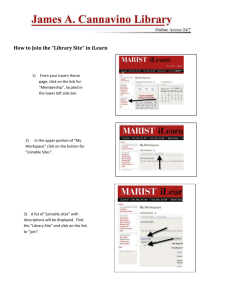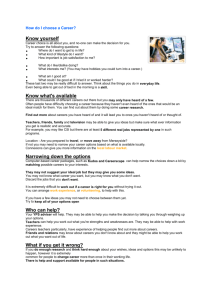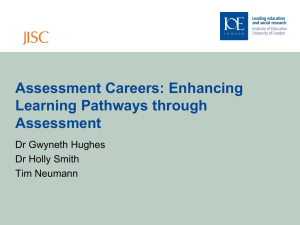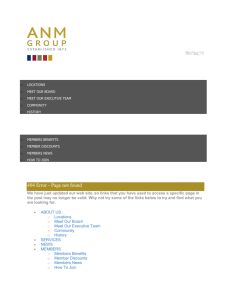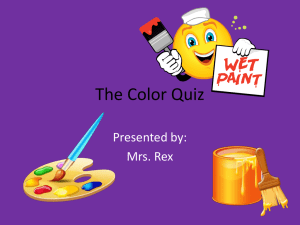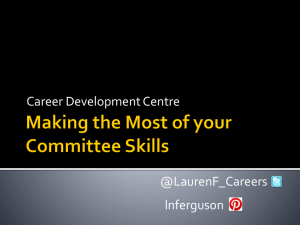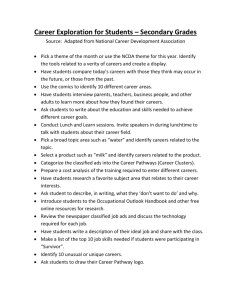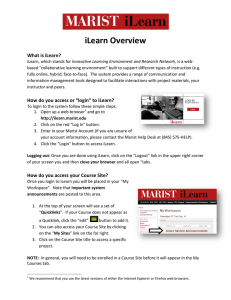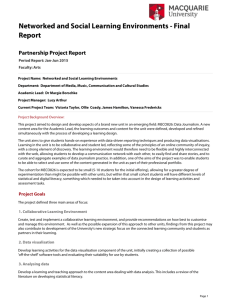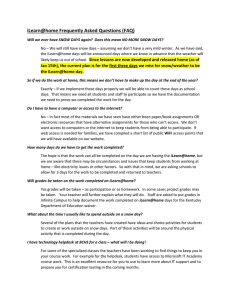Planning Career Futures iLearn Project
advertisement
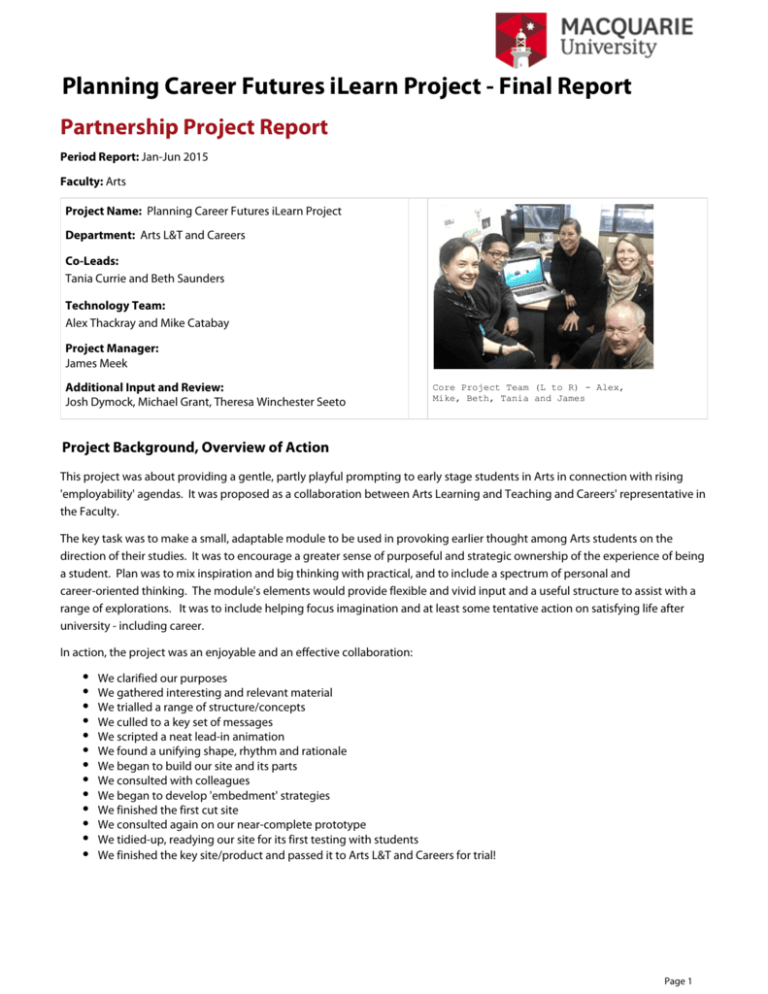
Planning Career Futures iLearn Project - Final Report Partnership Project Report Period Report: Jan-Jun 2015 Faculty: Arts Project Name: Planning Career Futures iLearn Project Department: Arts L&T and Careers Co-Leads: Tania Currie and Beth Saunders Technology Team: Alex Thackray and Mike Catabay Project Manager: James Meek Additional Input and Review: Josh Dymock, Michael Grant, Theresa Winchester Seeto Core Project Team (L to R) - Alex, Mike, Beth, Tania and James Project Background, Overview of Action This project was about providing a gentle, partly playful prompting to early stage students in Arts in connection with rising 'employability' agendas. It was proposed as a collaboration between Arts Learning and Teaching and Careers' representative in the Faculty. The key task was to make a small, adaptable module to be used in provoking earlier thought among Arts students on the direction of their studies. It was to encourage a greater sense of purposeful and strategic ownership of the experience of being a student. Plan was to mix inspiration and big thinking with practical, and to include a spectrum of personal and career-oriented thinking. The module's elements would provide flexible and vivid input and a useful structure to assist with a range of explorations. It was to include helping focus imagination and at least some tentative action on satisfying life after university - including career. In action, the project was an enjoyable and an effective collaboration: We clarified our purposes We gathered interesting and relevant material We trialled a range of structure/concepts We culled to a key set of messages We scripted a neat lead-in animation We found a unifying shape, rhythm and rationale We began to build our site and its parts We consulted with colleagues We began to develop 'embedment' strategies We finished the first cut site We consulted again on our near-complete prototype We tidied-up, readying our site for its first testing with students We finished the key site/product and passed it to Arts L&T and Careers for trial! Page 1 What was achieved Above: Snippets from top level of module, plus example of supporting cartoons. "eXplore Your Potential" was created in the form of an iLearn site. It comprises an animated lead-in scene-setter and 3 Page 2 "eXplore Your Potential" was created in the form of an iLearn site. It comprises an animated lead-in scene-setter and 3 sections: eXplore Me, eXplore Opportunities, eXplore Goals. It collates a mix of resources and activities suggesting and supporting exploration of self, situation and direction. Its parts can be used in any order, according to need or preference. It includes some external source materials, some sourced within existing Careers area resources and some created especially for this purpose - including an interactive crossword and a self assessment quiz. Each section follows a common structure, proving some vivid stimulus Activities, going deeper on a particular factor in a Snapshot and then providing a selection of optional Further resource/activities to eXplore. The site and its various elements now exist as an adaptable and readily modifiable core set of materials. Plan is to use this assist ongoing efforts by Careers to integrate direction-orienting activities into selected 'early stage' units across Arts. The whole set may be deployed with small modification as a single block or specific parts could be taken and integrated with other unit materials. Some support has been given around 'embedment strategies' and first pilot adaptation is already running within the Bachelor of Security Studies using the fruits of this FPP. Materials purposefully vary from big picture and inspirational through to focussing activities. They are designed to work for purposes of both school leaver students and people further along their journeys. eXplore Your Potential contains selectively assembled elements of Career thinking and Emotional Intelligence development. As such, it should also serve as useful prototype and input for a range of further activities in adjacent areas, including the recently mooted CareerWise. It may even provide a little inspiration too. Above: Frame snippets from scene setting animation. Project closure recommendations Further consideration of already identified mid-stage and final year follow-ons is definitely encouraged. A pilot is in train but a trialling in a range of settings - both as a whole and in parts - would be useful. It would make sense that this is done with the direct involvement of Careers and Arts L&T staff in the processes of 'embedding'. Later consideration of whether the site (or its separate elements) could be effectively shared through iShare may be worthwhile, even noting that some elements will sometimes need alteration to suit the particular unit in which the materials are being used. After a period, reconsideration of the balance of various aspects in the module may be in order. Naturally, this would be informed by student (and lecturer) feedback. Examples: Thinking vs Doing. Personal attributes vs Career direction. Fun vs Serious ... Further consideration of promotional opportunities in relation to the module could be useful. For instance, sharing access to the standalone product (or parts only) may be in order. Via - say - a related article and free access in Student mode through the Mq Teche Blog? Evaluation 1. Formative evaluation carried out to date A range of activities have provided useful (and reinforcing) feedback to this point. These include: Reflection in action by the project team Commissioned commentary from a colleague in Learning Skills Commissioned commentary from Accessibility/Universal Design specialist Brief reactions sought from a range of senior and parallel-level colleagues as elements were developed. Page 3 2. Summative evaluation completed or planned for future A pilot is running in Semester 2 within the Bachelor of Security Studies. This will provide further feedback on the bigger idea and specific implementation. This is not yet technically summative evaluation, however some of the follow-on evaluation strategies for this project include: Sharing of the project at Arts Faculty Learning and Teaching Committee Contributing a segment as part of the FPP Symposium at Learning and Teaching Week 2015 Fielding of student reactions during the pilot - including via an 'ideas and reactions channel' built into the module Incorporating of relevant questions into the LEU for the (new) plot unit host. Page 4

